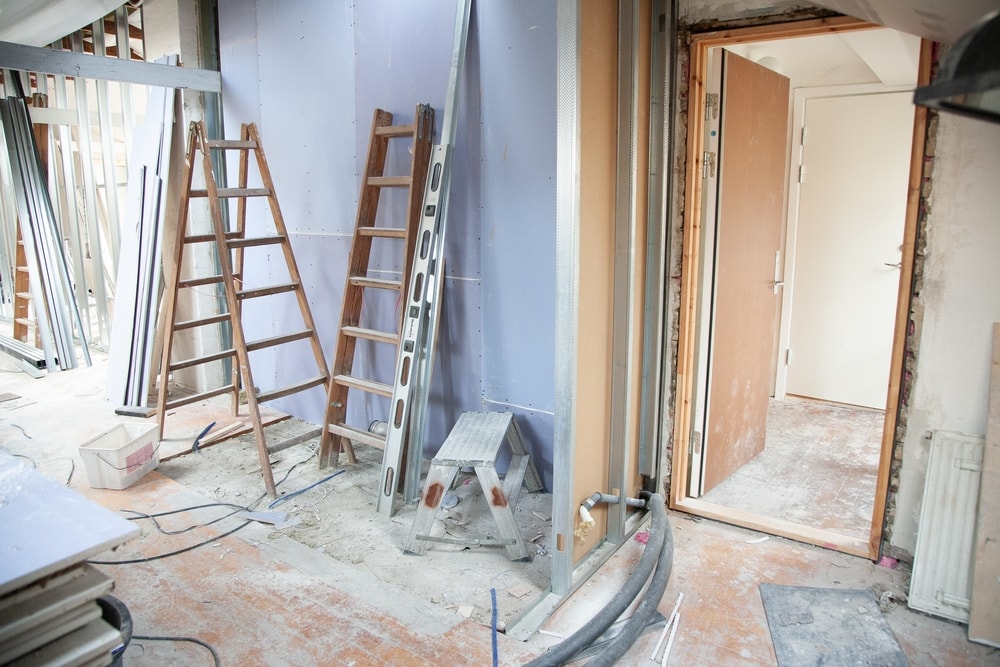In a fickle real estate market, sometimes it makes sense to remodel the home we’ve got instead of moving elsewhere. Remodeling can be as extensive as adding a wing or second story addition, or as simple as turning an unused dining room into a home office.
Budgeting for a home remodeling is quite different than budgeting for, say a new car or a vacation. Hidden hazards, unexpected structural problems, screwy access, and even inflation can bring up the cost of remodeling higher than we budgeted for. If a home remodeling project is in your future, here are 10 ways we discovered to lower the cost of a remodel and keep that budget on track.

1. Shop around for the best terms. For most of us, a home remodel has to be financed. Instead of charging the remodeling on a credit card, talk to your banker about other options. A home equity line of credit is what worked for us; your banker might have other ideas.
2. Expect the unexpected. Hidden asbestos, old wiring, and rotten sub floors are just a few hidden problems that don’t surface until a remodel has begun. To prevent a hidden hazard from throwing your budget off track, scale back the remodeling project by 10% to allow for unexpected costs.
3. Ask about DIY demolition. Whether it’s ripping up the carpet or tearing into the walls, ask your contractor about tackling this part of the project yourself. DIY demolition can knock down the cost of remodeling as much as 20% which can free up cash for other upgrades.
4. Keep the construction site clean. Construction work generates wood scraps, cardboard boxes, and other trash which must be removed from the site regularly. Rather than having the remodeling contractor hire a cleaning crew, tackle this job yourself to save money. The money saved here can help offset higher costs elsewhere.
5. Sell recyclables. Another way to squeeze the budget gap is to sell anything that’s recyclable instead of just hauling it down to the dump. Copper wire, used carpet pads, and aluminum siding are just a few examples of discarded products that could be sold for scrap. Also worth selling (such as on Craigslist) is your old carpet, old cabinets, leftover floor tile, old light fixtures and other used fixtures.
6. DIY painting and wallpaper. Many of us can manage painting a room, and perhaps even a bit of wallpapering too. If your remodeling budget has little wiggle room, hire out the work you can’t do and leave the easier tasks for yourself.
7. Ask for discounts when shopping. Stores that sell to the trades usually will extend the same discounts to homeowners who are remodeling on a large scale. Most paint & wallpaper shops will let you open a “cash account” for discounts of 10-20%. As far as other materials, ask your contractor if you can use his discount for lighting & plumbing fixtures, carpet, and flooring at wholesale prices.
8. Consider bartering. Some subcontractors will consider bartering their services especially if you have a veggie garden, an old car, or antique tools. If remodeling costs look like they could run over budget, ask if bartering is possible.
9. Used second hand material. Salvage yards and the Habitat for Humanity retail stores are great places to find budget friendly building materials. Buying used materials in one part of the house can free up cash for expensive upgrades elsewhere.10. Value Engineering. Even the best money managers find it tough to stay on budget during an extensive remodeling. If it looks like costs may run over, the best strategy is to concentrate the remaining funds into the things that matter for resale, and cut costs in the areas that just aren’t that important.